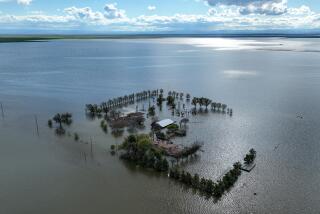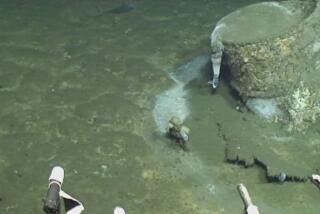Mercury from Gold Rush mining still washing downstream in floods
The destructive environmental legacy of Gold Rush mining in the Sierra Nevada could last for thousands of years in the form of ongoing erosion of mercury-laced sediments, according to new research.
Mercury, a toxic heavy metal, was used in copious amounts in California’s hydraulic gold mining operations in the mid- and late 1800s.
Miners blasted gold-bearing sediment out of vast, ancient gravel beds with water cannons. They then added liquid mercury to the slurry, allowing the gold-mercury amalgam to sink to the bottom of troughs.
But finer gold-mercury particles washed out of the mixture with the bulk of the sand and gravel. It has been estimated that between 3 million and 8 million pounds of mercury entered the environment from the hundreds of hydraulic gold mines that were operated in the Sierra before a court order banned the downstream deposition of mining debris in the region.
Researchers have long known that mercury-tainted sediment has made its way downstream all the way to San Francisco Bay, contaminating fish and wildlife and entering the food chain.
In a paper published online Monday in the Proceedings of the National Academy of Sciences, researchers tried to get a more precise idea of the deposition process.
They examined historical streamflow and topographical data in the Yuba River corridor and ran models to gauge sediment distribution downstream of old gold fields.
They concluded that large stores of undiluted mining debris remain in the river’s floodplain -- a reservoir of contaminants that major floods can unleash and carry downstream for the next 10,000 years.
Given predictions that climate change will increase extreme weather events, powerful floods capable of eroding the mercury deposits could become more frequent.
Potent floods can “effectively deliver toxic sediment slugs downstream into sensitive lowlands, thus augmenting a major potential source of food web contamination” in the tidal wetlands of the San Francisco Bay estuary, wrote the authors, led by Michael Bliss Singer of the Earth Research Institute at UC Santa Barbara.
Twitter:@boxall







